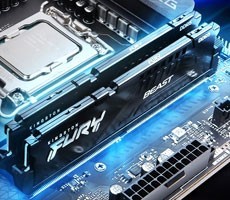MongoDb or Mongo is a most popular open source NoSQL database. It does not rely upon a traditional table based relational database structure. It uses JSON based dynamic schemas which are editable anytime.
Source: LXer – How to Install MongoDB on Ubuntu 22.04
Monthly Archives: May 2022
Silicon Valley Investors Give Startups Survival Advice for Downturn
After years of funneling cash into startups’ grand ambitions, Silicon Valley’s investors are engaging in the grim ritual of delivering survival advice to their portfolio companies. From a report: In recent online slide presentations, blog posts and social-media threads, venture-capital doyens including Lightspeed Venture Partners, Craft Ventures, Sequoia Capital and Y Combinator are telling the founders that they need to take emergency action for what could be the sharpest turn in more than a decade. Their advice includes cutting costs, preserving cash and jettisoning hopes that hedge funds or other investors will swoop in with big checks.
“The boom times of the last decade are unambiguously over,” Lightspeed, which has backed companies including social network Snap and crypto exchange FTX, wrote in a dispatch for startup executives that was posted on Medium, a publishing platform, this month. The investors’ admonitions are a departure from the growth-above-all mantra for startups in recent years, and come as the venture market is showing signs of sputtering. Funding for global startups — at around $58 billion in commitments midway through the second quarter — is on pace to drop by about one-fifth in the period compared with the previous quarter, according to analytics firm CB Insights. The tech-heavy Nasdaq Composite Index is down about 25% from its all-time high in November, and SoftBank Group, which has poured more than $100 billion into investments, this month reported a $26.2 billion loss in the first quarter as valuations plummeted in its portfolio of tech companies.
Read more of this story at Slashdot.
Source: Slashdot – Silicon Valley Investors Give Startups Survival Advice for Downturn
Linux 5.19 Allows Using TRIM To Zero-Out Sectors On Supported eMMC
Last week the (e)MMC storage new feature code landed into the Linux 5.19 merge window…
Source: Phoronix – Linux 5.19 Allows Using TRIM To Zero-Out Sectors On Supported eMMC
Google Quietly Bans Deepfake Training Projects on Colab
Google has quietly banned deepfake projects on its Colaboratory (Colab) service, putting an end to the large-scale utilization of the platform’s resources for this purpose. From a report: Colab is an online computing resource that allows researchers to run Python code directly through the browser while using free computing resources, including GPUs, to power their projects. Due to the multi-core nature of GPUs, Colab is ideal for training machine learning projects like deepfake models or for performing data analysis. Deepfakes can be trained to swap faces on video clips, adding realistic facial expressions to make the result appear genuine, although it’s fake. They have been used for spreading fake news, creating revenge porn, or for fun. However, the lack of ethical limitations in their use has been the source of controversy and concern.
Read more of this story at Slashdot.
Source: Slashdot – Google Quietly Bans Deepfake Training Projects on Colab
2 tools that make RHEL my dream Linux
Learn how Flatpak and Toolbx make Red Hat Enterprise Linux (RHEL) 8 and 9 both fun to use and capable of handling the serious stuff.
Source: LXer – 2 tools that make RHEL my dream Linux
NixOS 22.05 Released With New Graphical Installer
NixOS as the Linux distribution built around the unique Nix package manager is out with its first release of the year…
Source: Phoronix – NixOS 22.05 Released With New Graphical Installer
US Claims Top Supercomputer Rank With AMD Powered Frontier And It's Totally EPYC

Supercomputing changed in the late 90s. It used to be that the biggest and fastest computers were all completely custom jobs, with proprietary everything and exotic hardware running esoteric architectures. In the late-90s, someone figured out that you could achieve supercomputer performance on some tasks simply by wiring together a large cluster
Source: Hot Hardware – US Claims Top Supercomputer Rank With AMD Powered Frontier And It’s Totally EPYC
Greece Passes First Climate Law, Vows To Cut Dependence on Fossil Fuels
Greece has passed its first climate law, which sets out specific targets to fight climate change and wean itself off coal in power generation by 2028. From a report: The legislation sets interim targets for Greece to cut greenhouse emissions by at least 55% by 2030 and by 80% by 2040 before achieving zero-net emissions by 2050. It also engages the country to cut dependence on fossil fuels, including weaning off indigenous lignite or brown coal — once the main source of energy — in electricity production from 2028 onwards. This target might be brought forward to 2025, taking into account security of supplies. “It’s an existential matter, a very important one, because it has to do with our lives, because it has to do with our children’s lives,” Energy Minister Kostas Skrekas told lawmakers before the vote. “Is this just going to help protect the environment? ÎÎ, it’s not. It also helps the country’s energy security.”
Read more of this story at Slashdot.
Source: Slashdot – Greece Passes First Climate Law, Vows To Cut Dependence on Fossil Fuels
Playtime Engineering debuts two new music makers for kids
Ahead of the NAMM 2022 trade show being held in Anaheim next weekend, San Francisco’s Playtime Engineering has unveiled a pair of toys, the Blipbox SK2 synthesizer and the Blipbox myTrack groovebox, designed to help even the youngest musically-inclined minds produce, record, save and share electronic beats and melodies.
The SK2’s spacey surface detailing belies its ability to generate more than 400 pre-recorded melodies ranging from chiptunes to orchestral, as well as multi-mode filters, 16 oscillator schemes and stereo multi-tap delay functions. A signal flow diagram is printed on the unit’s front face and all of the controls are labelled so that even basement-level beginners can easily learn and discover new synth sounds. Users will be able to export their tracks through a 1⁄4-inch audio out and import new sounds through the MIDI In.
The myTRACK, conversely, is a kid-sized multi-track sampling device that uses a 5×5 grid of playpads to trigger beats and sequences (think, a toned down Ableton Push 2). Each of the 48 pre-included instruments can be applied to any, or all five, of the available tracks as can the process effects controlled by the device’s physical levers. In fact, many of the myTRACK’s more advanced features are presented as dedicated, physical buttons rather than as buried submenu options. Additionally, those pre-packed sounds and sequences can be updated via USB-C to include new sets such as orchestra, hip-hop, jazz, rock and EDM. An incorporated microphone allows your future Grandmaster Flash to explore the outside world in search of new sounds to capture and modulate. The myTRACK offers a 5-pin MIDI OUT port so that the device can connect to and control an SK2 while its USB-C port is class-compliant USB MIDI in and out, so you’ll be able to use it with any Mac or Windows DAW.
The SK2 will retail for $199 and be available in November 2022. The myTRACK will follow in Q1 2023 for $249
Source: Engadget – Playtime Engineering debuts two new music makers for kids
Amazon will give Cloud Cam owners a free camera when service shuts down
Amazon is shutting down service for the Cloud Cam, but you may not mind if you’re reluctant to buy a replacement. MacRumors and The Verge have learned Amazon will offer owners a free Blink Mini security camera and a one-year subscription to the higher-end Blink Subscription Plus service (normally $100 per year) before Cloud Cam functionality ends on December 2nd. Key Edition owners will also get a fourth-generation Echo speaker. Ideally, you won’t have to pay a cent more to keep your home supervised in the near future.
In an email to customers, Amazon said it was shutting down Cloud Cam service to focus on Blink, Ring and other products that “make your home smarter.” The move will primarily end storage for video recording, but people using the Cloud Cam Key Edition as a Zigbee hub will also lose the ability to connect to smart locks or manage Amazon Key PIN codes.
The end of service doesn’t come as a complete surprise. Amazon stopped offering the Cloud Cam at the end of 2019 as Blink and Ring ultimately took over. We won’t blame you if you’re still upset, though. Amazon is joining Wyze and other brands in ending support for security cameras on relatively short notice. This could also leave some users paying more. Some of the Cloud Cam’s free features, such as quick video access and motion-based recording, require at least a $30 per year Basic subscription with Blink. That’s a small price, but it’s more than you might have expected to pay.
Source: Engadget – Amazon will give Cloud Cam owners a free camera when service shuts down
15 Fantastic Hidden Gem Indie Games You'll Wishlist So Hard

As if the previous fifteen indie games weren’t enough for you, here is another collection of interesting-looking in-development indie projects that you should very probably pop on your wishlist. Scroll on to discover at least something that’s going to catch your eye (wallet).
Source: Kotaku – 15 Fantastic Hidden Gem Indie Games You’ll Wishlist So Hard
The Uncertainty of Star Wars Jedi's Future Makes Jedi Survivor Exciting

The last few years have been interesting for Star Wars as an IP. While the theatrical films more than made their money back (for the most part), and the franchise has seen a recent surge in the TV and books space, its gaming presence has been a bit messier. Both DICE and EA’s multiplayer-focused Star Wars Battlefront …
Source: Gizmodo – The Uncertainty of Star Wars Jedi’s Future Makes Jedi Survivor Exciting
Japan Tries To Revitalize Its Research
Alarmed by the declining stature of its universities, Japan is planning to shower up to $2.3 billion a year on a handful of schools in hopes of boosting their prominence. From a report: The scheme was approved by the Japanese legislature on 18 May, although many details, including how to pick the favored universities, are still up in the air. But the move, under study for more than a year, has rekindled a debate among academics over how to reverse Japan’s sinking research fortunes. Several previous schemes have yielded mixed results.
The new plan “aims to provide young promising scholars with the research environment that the world’s top universities are supposed to offer, to dramatically enhance international collaborations, and to promote the brain circulation both domestically and internationally,” says Takahiro Ueyama, a science policy specialist on the Council for Science, Technology and Innovation (CSTI), Japan’s highest science advisory body, which was heavily involved in crafting the scheme. But Guojun Sheng, a Chinese developmental biologist at Kumamoto University in Japan, is skeptical. “I am not very optimistic that this [plan] will do much to curb the slide in the ranking of Japanese research activities or international competitiveness,” he says. Sheng, who previously studied and worked in China, the United States, and the United Kingdom, says the new plan does not address fundamental problems at Japanese research institutes: too few women and foreign scientists, a fear of change, and lack of support for young scientists. To get better results, “Japan has to change its research culture,” he says.
Read more of this story at Slashdot.
Source: Slashdot – Japan Tries To Revitalize Its Research
How to Easily Create QR Codes on Linux
A QR code is a type of barcode that stores information and is read using a digital device, including smartphones. If you’ve been to convenience stores or cafés, you’d have probably seen QR codes there for receiving payments or sharing Wi-Fi passwords, among other things.
Source: LXer – How to Easily Create QR Codes on Linux
AMD Ryzen 7000 Could Have A Memory Speed Edge Over Intel Raptor Lake 13th Gen

On Socket AM4, it took a few generations for AMD to get its memory controller performance all maxed-out. The original Ryzen struggled with DDR4 memory faster than about 2667 MT/s, and it wasn’t really until Zen 2 (the Ryzen 3000 series) that we started to see wide support for memory faster than 3000 MT/s.
That’s all in the past now, of
Source: Hot Hardware – AMD Ryzen 7000 Could Have A Memory Speed Edge Over Intel Raptor Lake 13th Gen
Google Pixel 7 prototype reputedly shows up on eBay
It seems Google just can’t stop its upcoming hardware from showing up in the wild. Weeks after a Pixel Watch prototype was left at a restaurant (and before Google confirmed the device’s existence), it appears someone tried to sell a Pixel 7 on eBay.
The eBay listing for what certainly looks like a prototype Pixel 7 popped up on the Pixel subreddit, but it has since been taken down. The images that the seller posted didn’t shed a ton more light on the device. The front looks similar to the Pixel 6, hole-punch camera and all. The camera bar on the rear has two lenses as well.
Take a closer look at one of the images, though, and you’ll see something that might raise your eyebrows. In the reflection of the purported Pixel 7’s rear is what looks like a Pixel 7 Pro — the device that the seller was using to take the pictures. This suggests that, whoever the seller is, they had access to both models of the upcoming Pixel lineup.
In the description, the seller claimed that Pixel 7 was running Android 13, with apps that are at the developmental stage. They said the phone has 128GB of storage and 8GB RAM and that they were selling it as is with “no guarantees of any sort.” The phone would have shipped from McKinney, Texas.
Although Google announced the Pixel 7 and its Pro sibling at I/O, it’ll be months before the devices, which will run on a second-gen Tensor chip, go on sale. Google will surely provide a more in-depth look at them at a hardware event. But, given the leaks to date, we might already know every detail by the time Google formally shows them off.
Source: Engadget – Google Pixel 7 prototype reputedly shows up on eBay
Australian Watchdog Sues Mastercard for Allegedly Misusing Card Payment Market Power
The Australian Competition and Consumer Commission (ACCC) has started legal proceedings in the Federal Court against Mastercard Asia Pacific and Mastercard Australia for alleged anti-competitive conduct that substantially lessened competition in the supply of debit card acceptance services. From a report: The consumer watchdog alleges between November 2017 to at least November 2020 that Mastercard had a “substantial degree of power” in the market for the supply of credit card acceptance services under the Reserve Bank of Australia’s (RBA) least-cost routing initiative. The least-cost routing initiative aimed to give merchants the ability to choose which debit card network processed their contactless dual-network debit card payments — whether that was Mastercard, Visa, or Eftpos — and was intended to increase competition in the supply of debit card acceptance services, while reduce payments costs associated with processing debit card payments for businesses.
For dual-network debit card payments, the fees paid by a merchant can vary depending on the debit card network used for processing the transaction. The ACCC alleges that in response the least-cost routing initiative, Mastercard entered into agreements with more than 20 major retailers, including supermarkets, fast food chains, and clothing retailers, to offer cheaper interchange rates for processing credit card payments if they agreed to process Mastercard-Eftpos debit card transactions through the Mastercard network, rather than the Eftpos network, even though Eftpos was often the lowest cost provider.
Read more of this story at Slashdot.
Source: Slashdot – Australian Watchdog Sues Mastercard for Allegedly Misusing Card Payment Market Power
Acer Predator Triton 500 SE review: A refined powerhouse for work and play
Acer is one of those laptop makers that frequently tries too hard to stand out. Consider the Predator Triton 900, a wild machine with a 360-degree swiveling screen that I found to be mostly useless. Earlier this month, Acer also announced plans to bring its SpatiaLabs glasses-free 3D technology to gaming laptops. Ambitious swings are nice and all, but these days I’m more interested in notebooks that are subtle about their gaming prowess. And after testing out the Predator Triton 500 SE for the past week, I’ve learned that Acer can pull that off pretty well.
The Triton 500 SE packs all of the power you’d want from a large gaming notebook, in a sleek metallic frame that wouldn’t look out of place in a stuffy office or lecture hall. There’s little need for garish LEDs (except for the keyboard backlight, which you can always turn off), or other obnoxious case bling. It’s ready to get down to work. And sure, it’s not the only subtle gaming notebook around, but competitors like the Razer Blade cost more than the Triton’s $2,300 starting price.
What separates the Triton 500 SE from your typical productivity laptop, aside from the powerful hardware, is its glorious 16-inch screen. It has a 16:10 aspect ratio, making it slightly taller than typical widescreen displays and more useful for dealing with documents. Our review unit shipped with the 240Hz WQXGA model (running at 2,560 by 1,600 pixels) which, in my book, is the ideal balance between sharpness and silky smooth refresh. There’s no HDR support, but at least it offers a relatively high brightness of 500 nits, as well as full coverage of the DCI-P3 gamut. And while the screen is a big reason the Triton is a hefty 5.3 pounds, that’s still better than most 17-inch gaming notebooks (the Razer Blade 17 clocks in at 5.5 pounds).
Powering that glorious display is Intel’s 12th-gen processors and NVIDIA’s latest RTX 30-series GPUs, all the way up to the droolworthy RTX 3080 Ti. The unit we received featured that GPU as well as Intel’s top-end Core i9 12900H, 32GB of LPDDR5 RAM and a speedy 1TB NVMe SSD. To be honest, it was that configuration that inspired me to review the Triton 500 SE in the first place. I wondered, can this unassuming notebook actually satisfy gamers? Turns out, yes.
Halo Infinite, for example, reached a solid 85fps at the Triton’s native resolution at ultra graphics settings. While I missed the HDR and expansive view I’ve grown used to on the Alienware QD-OLED ultrawide monitor, I was surprised at just how immersive the game felt on a 16-inch display. You can thank the taller 16:10 aspect ratio for that – it sometimes felt like I was about to dive headfirst into Halo Infinite’s maps. (That could also be a sign that I need to make my desk a bit more ergonomic for laptops.) The 240Hz display also shined as I lowered the game’s graphics settings to reach higher framerates. I’m still not fully sold on such a high refresh rate, but it’s nice to see laptop makers pushing for smoother and more realistic gameplay.
Gearheads will likely appreciate the Triton 500 SE’s built-in overclocking capabilities. Acer’s software makes it easy to tweak clock speeds and thermal profiles. Personally, though, I was just glad to have a simple “Turbo” button on the keyboard. It revs up the fans all the way and automatically overclocks the system. In Halo Infinite and all of the benchmarks I ran, it typically led to 8 to 10 percent increase in performance. The big downside? It’s so loud you probably wouldn’t want to use it without headphones.
Even without overclocking, the Triton 500 SE annihilated all of the benchmarks we threw at it, delivering performance mostly on-par with the Razer Blade 15. There were a few instances where the Razer edged ahead, like in PCMark 10 and Geekbench 5’s Compute test (which mostly stresses the GPU). But in others, including Cinebench R23 and 3DMark’s Port Royal ray tracing benchmark, the Triton held a commanding lead. Partially, that’s due to our review unit having a slightly faster 12th-gen processor. Hit that Turbo switch and the Triton’s numbers soar even higher.
|
PCMark 10 |
3DMark (TimeSpy Extreme) |
Geekbench 5 |
ATTO (top reads/writes) |
|
|
Acer Predator Triton 500 SE (2022, Intel i9-12900H, NVIDIA RTX 3080 Ti) |
6,779 |
4,887 |
1,736/11,382 |
6.4 GB/s / 4.9 GB/s |
|
Razer Blade 15 (2022, Intel i7-12800H, NVIDIA RTX 3080 Ti) |
7,085 |
4,798 |
1,795/9,529 |
4.32 GB/s / 6.45 GB/s |
|
ASUS Zephyrus G14 (2022, AMD Ryzen 9 6900HS, Radeon RX 6800S) |
7,170 |
3,821 |
1,543/9,839 |
3.5 GB/s / 4 GB/s |
|
ASUS Zephyrus G15 (AMD Ryzen 9 5900HS, NVIDIA RTX 3080 Max-Q) |
6,881 |
4,530 |
1,426/7,267 |
3.3 GB/s / 2.85 GB/s |
NVIDIA’s Advanced Optimus feature, which intelligently swaps the Triton’s GPU between integrated and discrete graphics, also worked flawlessly throughout my testing. I didn’t see any of the performance bottlenecking that occurred with older Optimus machines, where discrete GPUs had to be squeezed through integrated graphics. There’s also a MUX switch that lets you manually change between both GPUs without rebooting the entire system.
After benchmarking and playing several games for a few hours, the Triton 500 SE remained relatively cool. The CPU typically hovered around 78 Celsius under load, while the GPU hit 83 Celsius. It never felt hot to the touch, though it’s worth noting that I was testing in my chill basement. Fan noise was about what I’d expect with the Triton’s default performance settings – audible, but not nearly as irritating as cranking them up all the way with the Turbo button.
But even though Acer got cooling and overall performance right, it’s a shame that some of the Triton 500 SE’s hardware holds it back. The keyboard is fine for gaming, but I’d like more feedback for lengthy typing sessions. And while I appreciated the large and smooth trackpad, the actual clicking mechanism felt stiff – it was particularly bad at registering right clicks. I’m also not a fan of having a fingerprint sensor right on the trackpad, as it often gets in the way while I’m swiping around. Just stick that sensor on the power button, or throw in a Windows Hello webcam already! I’d also like to see Acer bundle more than just a pair of tinny stereo speakers, especially since Razer, Dell and others are cramming many more drivers into their notebooks.
Battery life is another disappointment, though I suppose we’ve grown used to that in powerful gaming laptops. The Triton 500 SE lasted five hours and twenty-five minutes in our benchmark, which involves looping an HD video. That’s 17 minutes less than the Razer Blade 15. During my typical workday, it usually lasted around five hours before needing a recharge. Unfortunately, that’s typical for gaming laptops with large screens. You’ll never want to be too far from a power plug.
Still, I’d imagine most people would want to keep their workstations plugged in for the best performance. Acer also included all of the ports you’d need to make it a true workstation, including two USB 3.2 Type A connections, dual USB-C Thunderbolt 4 ports, HDMI, Ethernet and an SD card slot. And thankfully Acer didn’t get rid of the headphone jack, something more laptop makers are doing these days.
The Acer Predator Triton 500 SE starts at $2,300, which is $200 less than the Razer Blade 15 with 12th-gen Intel chips and $400 less than the most recent Blade 17. Be prepared to shell out $3,000 if you want all of the hardware from our review unit (still cheaper than comparable machines from Razer and others). But if you can live with last year’s 11th-gen Intel chips, you can also find older Triton 500 SE models for $2,000 and under. We’d recommend doing whatever it takes to get a 12th-gen chip, though, as the performance difference is huge.
If anything, the Triton 500 SE proves that Acer is doing more than just chasing gaming gimmicks. After being known for producing cheap and unsophisticated laptops for years, it’s nice to see that Acer can make a refined gaming notebook without any unnecessary bling.
Source: Engadget – Acer Predator Triton 500 SE review: A refined powerhouse for work and play
Egypt Unveils Trove of Ancient Artifacts Found Near Cairo

An impressive collection of 2,500-year-old ancient Egyptian artifacts was showcased today at the famous Saqqara necropolis.
Source: Gizmodo – Egypt Unveils Trove of Ancient Artifacts Found Near Cairo
Explaining Ansible Facts With Examples
This tutorial explains what Ansible facts are, and how to gather system information i.e facts in Ansible playbooks.
Source: LXer – Explaining Ansible Facts With Examples
